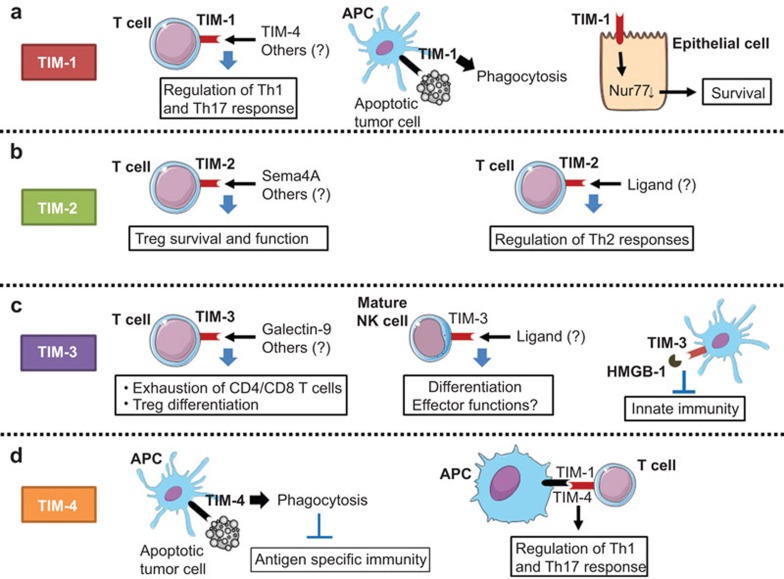Figure 2.
The role of the TIM gene family in antitumor immune responses. TIM molecules regulate multiple immune pathways. (a) TIM-1 expression on T cells regulates the differentiation of T helper subsets,32,33 whereas TIM-1 expressed on APCs serves as a phagocytosis receptor that facilitates the removal of apoptotic cells.34 TIM-1 is also expressed on kidney epithelial cells and promotes cell survival through the degradation of nuclear factor NUR77.35 (b) TIM-2 promotes the differentiation of Th2 cells and regulates T-cell survival and activation upon interaction with Sema4A on myeloid cells.38,40 (c) TIM-3 on DC suppresses innate immune signals mediated by nucleic acids or DAMPs,27,28 whereas TIM-3 expressing T cells display exhausted phenotypes and trigger apoptosis by interacting with galectin-9.46 TIM-3 also regulates NK cell differentiation and function.55 (d) TIM-4 expression is largely restricted to APCs, and it serves as a phosphatidylserine receptor that regulates the engulfment of apoptotic cells; it interacts with TIM-1 on T cells to regulate the differentiation of Th1 and Th17 cells.34,57,59 APC, antigen-presenting cell; DAMP, damage-associated molecular pattern; DC, dendritic cell; NK, natural killer; Sema4A, Semaphorin 4A; TIM, T-cell immunoglobulin mucin.

